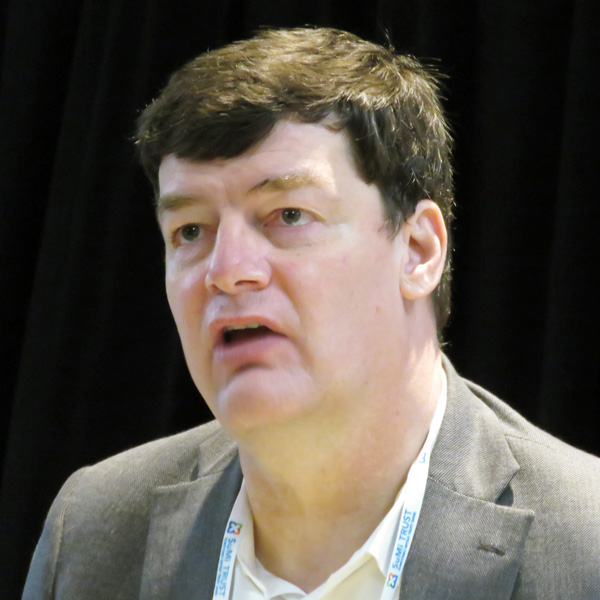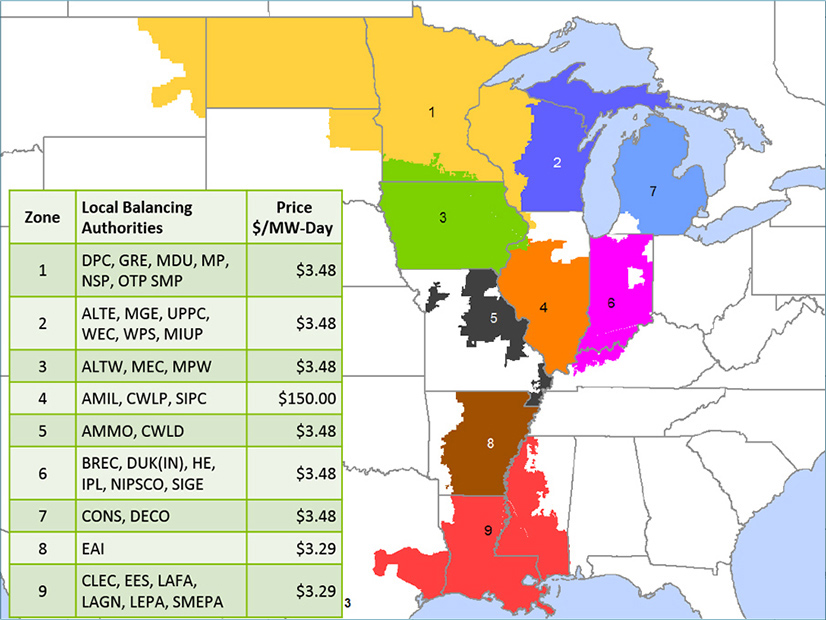PJM’s Independent Market Monitor offered limited support for major provisions in the RTO’s quadrennial review filing before FERC, while urging the commission to order revisions to some of the proposal’s methodologies and figures (ER22-2984).
In a Nov. 16 filing, IMM Joe Bowring signaled support for PJM’s plan to switch to the use of a forward-looking energy and ancillary services (EAS) offset, rather than relying on historical figures for the calculation, but said the use of long-term financial transmission rights (FTR) is unnecessarily complicated and inaccurate, and cannot be implemented because of the timing of the auctions.
“The more direct, simpler, more transparent, and more accurate approach starts with the forward curves and calculates hourly and nodal forward prices based on historical LMPs, which are a more reliable and more transparent method of calculating locational price differences. PJM should be required to use this approach rather than its proposed approach to the calculation of the forward-looking EAS offset,” the Monitor wrote.
In addition to reducing the overstatement of the net cost of new entry (CONE), and therefore capacity prices, the Monitor said the main benefit of a forward-looking EAS offset would be to better align with how investors look at the market. PJM’s proposal to use FTRs would conflict with that aim, he said.
The Monitor also said the RTO should be required to reconsider the static offset figure should FERC or PJM stakeholders make any significant changes to reactive ancillary service payments, given that revenues from that service factor into the EAS offset. PJM is proposing to set expected revenues using a payment estimate of $2,546 per MW-year.
The Monitor supported PJM’s proposal to calculate net CONE using a combined cycle (CC) power plant as the reference resource instead of a combustion turbine (CT) unit. The filing said that the change better reflects the type of facilities being added to the PJM fleet, noting that no significant number of CTs have been interconnected to the grid since 1999.
With respect to setting the variable resource requirement curve, the Monitor said PJM did not go far enough in its proposal to steepen the slope a quarter of the way towards vertical (effectively purchasing less additional capacity over the expected peak load), suggesting that the curve instead be rotated halfway toward vertical.
If the amount of capacity purchased in the 2023/24 Base Residual Auction was reduced in accordance with the IMM recommendation, a total of $1,790,941,751 in capacity would have been purchased, a decrease of $405,503,039 or 18.5% compared to the actual total of $2,196,444,791, according to IMM estimates.
“The shape of the VRR Curve directly results in load paying substantially more for capacity than load would pay with a vertical demand curve,” the filing said.
PJM Response
In its response to the Monitor’s filing, PJM told FERC that the market designs drafted in collaboration with the consulting firm Brattle Group would provide the necessary reliability expected in the future. It also noted that the IMM had missed the docket’s comment deadline by nearly a month.
“Brattle cautioned against adopting a curve that is tuned to support exactly a one-in-ten Loss of Load Expectation (“LOLE”) at this time due to the lower net [CONE] and greater fleet turnover than observed in prior quadrennial reviews. In other words, the PJM proposed curve is just and reasonable because it avoids the untenable risk associated with a VRR Curve that barely meets the 0.1 LOLE standard given the current market conditions,” PJM said in its response, filed Nov. 17.
The response also says that many of the IMM concerns regarding the use of FTRs had already been addressed by the commission in its 2019 order on PJM’s Reserve Market Enhancements. (EL19-58)
“In short, the Market Monitor’s concerns with the use of long-term FTR have already been thoroughly litigated and should not be relitigated here,” PJM
Generators Expand on Protests
J-Power USA and the PJM Power Providers Group also filed responses to a PJM retort to their quadrennial review protests before FERC.
Arguing that PJM should use a shorter amortization period within the Commonwealth Edison Locational Deliverability Area (LMP), J-Power said that the RTO has been misunderstanding the Illinois Clean Energy Jobs Act (CEJA) and case law in the state. In its Nov. 18 protest, the company said that under CEJA, the reference resource would be required to cease operations within the amortization period outlined in the filing.
“Like PJM, Brattle improperly conflates the provision of CEJA prohibiting gas-fired resources from increasing their emissions above current levels, which contains an exception for publicly-owned resources, with the separate provision requiring all gas-fired resources to reduce their emissions to zero by January 1, 2045, which has no similar exception.”
Referencing a section of the PJM response detailing how CEJA would allow for a CC unit to remain in operation if needed to provide reliability, J-Power said it is not realistic for large numbers of facilities to be constructed and maintained for that sole purpose. In an affidavit submitted on behalf of J-Power, Paul Sotkiewicz of E-Cubed Policy Associates wrote that there are currently no technologies available to convert a gas-fired unit to run entirely on hydrogen and that current carbon capture and storage capabilities do not meet CEJA requirements.
“A Reference Resource is intended to be a representative example, rather than some kind of exceptional resource. It is downright absurd to imagine that it would be the ‘norm’ for gas-fired resources in Illinois to have to be retained for reliability, or that a rational developer would sink hundreds of millions of dollars of at-risk capital into a resource based on the hope that system conditions will miraculously work out so that the resource is required for system reliability years in the future,” J-Power wrote.
P3, a group that represents PJM power producers, also took aim at the RTO’s choice to use a CC facility as the reference resource, saying that a CT is more reflective of a “pure capacity unit” as opposed to a more frequently dispatched generator.
“By using a combustion turbine as the reference unit, the VRR curve response to changes in energy market conditions is only impacted by net energy revenues projected to be earned during scarcity hours when the combustion turbine operates,” P3’s Nov. 14 response says.
While PJM has not recently seen construction of CTs, P3 argued that the resource type offers a possible solution to the need for flexibility to complement the installation of renewables.
“P3 absolutely concedes and acknowledges that more CCs have been built in PJM than CTs over the last 10 years in PJM. While a historical fact, it says absolutely nothing about the resources PJM will need in the future. PJM’s future needs are going to require flexible units (likely in the form of natural gas and coal) — particularly if there is significant renewable energy penetration,” the group’s filing says.
P3 also noted recent comments by PJM CEO Manu Asthana that that the RTO could see 40 GW of generation in the RTO retire by 2030. With the region’s load expected to increase in the future, the group argued, FERC would undermine reliability by accepting a capacity market built on the assumption that PJM is oversupplied with capacity.
“To P3, this sounds like PJM is indeed on the cusp of a reliability crisis and the impact of the instant filing will coincide directly with the predicted reliability challenges in PJM,” the group wrote.

